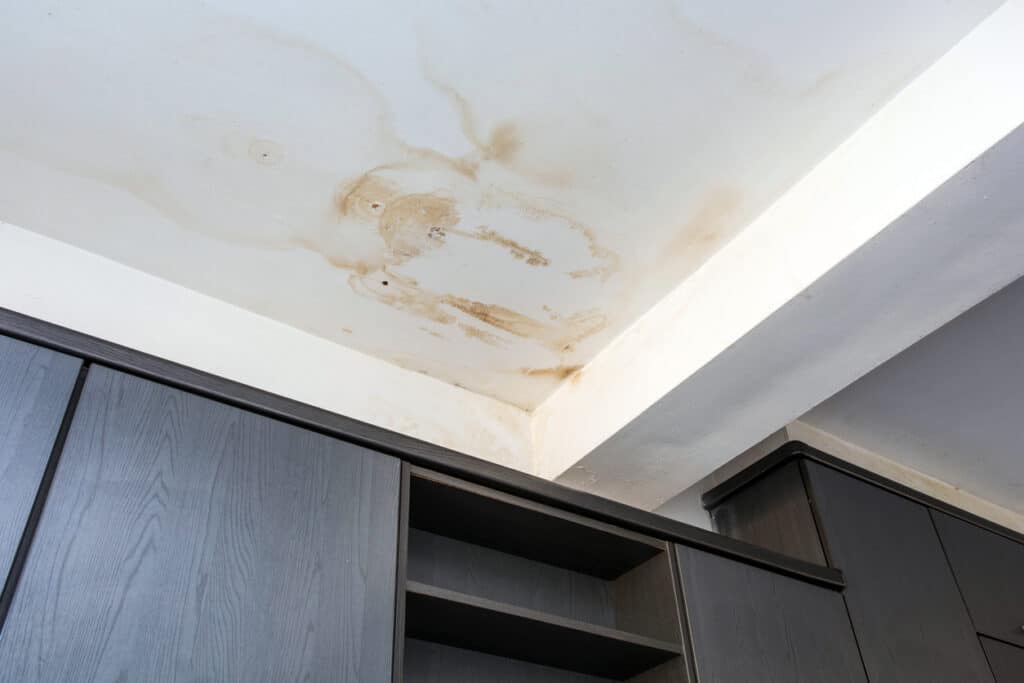If the damage is due to a storm or defective appliance, there are some actions to take immediately. Stem the flow of water by turning it off at a location prior to the leak, tarp the roof, or take whatever other actions are required to minimize damage. Not doing so can result in a denied claim by the insurance company. Be sure to take photos of the damage from every angle before the insurer’s adjuster arrives.
Always wear protective gear and a mask when cleaning up water damage. The following are tips for those that want to take a DIY approach.
Determine the Type of Water
Clean water originating from leaky pipes or rain doesn’t present a hazard to people or pets. Gray water comes from sinks and sources such as washing machines. It may have levels of contamination, but people can handle the mess themselves, providing they take appropriate precautions. Black water is never a DIY project. Its water from sewers or waterways and should always be considered contaminated. Call in a professional remediation team.
Electric and Gas
Liquid from any source can reach electrical outlets. Make sure there’s no power to the home. Unplug electronics as an extra precaution. Use extreme care when working around gas lines as there could be leaks.
Mold
The fungi can begin to grow in as little as 24 hours in warm, damp conditions. Some types are toxic to people and should only be addressed by a professional remediation company.
Dry it Out
Large fans and dehumidifiers can be rented to dry out the premises. It won’t prevent mold growth, but drying out the area minimizes further damage.
Removal
Salvage items that can be saved and remove anything affected by water damage. That includes drywall and other materials.
Disinfect
The entire affected area will need to be sanitized and disinfected. However, it may not be sufficient for mold removal.
